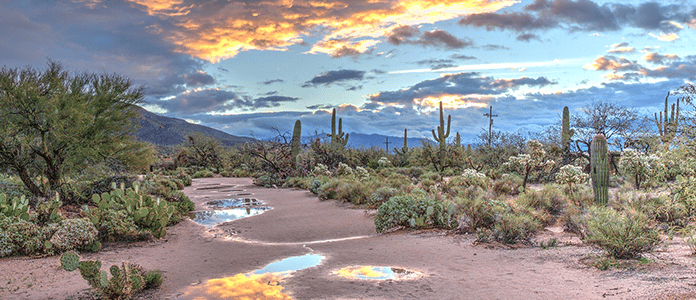
Wait….Arizona is Issuing New Medical Marijuana Licenses?
December 5, 2022 | Cannabis Law Updates
Article by: Janet Jackim, Co-Chair of the Cannabis Practice Group, jjackim@zuberlawler.com.
(Phoenix, Arizona) New MMJ Licenses to be Issued. Yes, Arizona’s Department of Health Services recently (the day before Thanksgiving, 2022) notified the public that it may issue new medical marijuana licenses in February or March, 2023.
Historical Context. Historically, Arizona voters narrowly passed Prop 203 (I-04-2010), the Arizona Medical Marijuana Act (the “Medical Act”), on November 2, 2010, establishing the State’s medical marijuana program. The Medical Act, since amended, may be found at Ariz. Rev. Stats. §§ 36-2801 et seq. [1]
Only a few months later, the Department issued its first rules on growing, producing and retailing medical marijuana in the State, effective April 14, 2011[2]. The current (amended) rules and regulations of the Department may be found here at https://apps.azsos.gov/public_services/Title_09/9-17.pdf.
However, by the end of May, 2011, the Governor of Arizona announced that the State would file a federal lawsuit to determine whether, in fact, the Medical Act was effective, reflecting the opinion of the U.S. Attorney for Arizona at the time, Dennis Burke, that the new law violated federal law prohibiting controlled substances including marijuana. By January, 2012, the State had dismissed its lawsuit but other lawsuits attempting to enforce or reject the Medical Act continued. Notwithstanding uncertainties posed by pending lawsuits, the Department and applicants proceeded to process patient applications for medical marijuana cards and entity applications for medical marijuana dispensary (retail) licenses.
Not until late May, 2018 did the Arizona Supreme Court, in a unanimous opinion in State v. Jones, No. CR-18-0370-PR, find that the Medical Act was effective, thereby exonerating the conviction and prison sentence of a medical marijuana patient (Rodney Jones) found guilty in Yavapai, County, Arizona, of possession of a very small amount of cannabis resin. This author (and her partner, Rob Mandel, whose bio is here), each filed an amicus brief with the Court on behalf of the imprisoned defendant Jones and physicians actively treating patients with medical marijuana, respectively. State v. Jones was a monumental development in cannabis law of the State of Arizona.
By 2022, approximately 131 medical marijuana dispensary licenses had been awarded in two tranches of 2012 and 2016.
Medical Marijuana Dispensaries’ Exodus from the Hinterlands. One of the quirks of the Medical Act (and Prop 207, the Smart and Safe Arizona Act initiative approved by voters in November, 2020 (the “Adult Use Act”[3])) is that, generally speaking, the Department may only issue retail licenses on a 1:10 basis, i.e., one (1) license per every ten (10) open, registered pharmacies in the State. Recently, the State determined that there were 1,340 open, registered pharmacies, thus yielding the issuance of a few more licenses.
In the early days of the Medical Act, medical retail licenses were awarded based upon Community Health Analysis Areas (or “CHAAs”), which the Department had developed among communities in the State to monitor various disease statistics (e.g., for cancer occurrences in designated communities), in reference to US 2000 Census Block Groups. In 2012 and 2016 Medical Act dispensary retail licenses were awarded by CHAA, reflecting all of the communities of the State. However, the then-current rules and regulations of the Department permitted a licensee to move its retail location after three (3) years of operation in the CHAA.
Picture the scenario of a Medical Act licensee which has overcome competitive applicants to obtain a retail dispensary license in the small mining community of Clifton, Greenlee County, Arizona, population 4,000 persons, of which a few hundred may be medical marijuana patients. With high costs of acquisition of the real estate, whether by purchase or lease, employee payrolls, plant and product acquisition costs, and administrative expenses and costs, the Clifton Medical Act dispensary could barely survive. The solution? Move the location of the dispensary to Pima or Maricopa Counties, the two (2) largest (by population) Counties in Arizona.
Many of Arizona’s rural county Medical Act retail dispensaries did just that, leaving a gaping hole in providing medical cannabis to rural patients.
Fast Forward to Late 2022. Desiring to at least partially rectify the cannabis’ industry’s failure to provide medical marijuana to outlying, minimally-populated Arizona counties, the Department determined in the Summer of 2022 it would invoke a statutory preference to award newly available medical marijuana licenses to under-served and un-served rural Arizona Counties. This is the current opportunity available to operators and investors.
Cautionary Statement: We do not know how many medical marijuana
_________________________________________________________________________________________
[1] The current (amended) AMMA may be found here at
https://www.azleg.gov/viewdocument/?docName=https://www.azleg.gov/ars/36/02801.htm.
[2] The current (amended) rules and regulations of the Department may be found here at https://apps.azsos.gov/public_services/Title_09/9-17.pdf.
[3] The Smart and Safe Arizona Act permits the State to develop an adult or recreational use program generally available to adults for recreational or other use. The current (amended) Adult Use Act may be found here at Ariz.Rev.Stats. §§ 36-2850 et seq. or https://www.azleg.gov/viewdocument/?docName=https://www.azleg.gov/ars/36/02850.htm.
